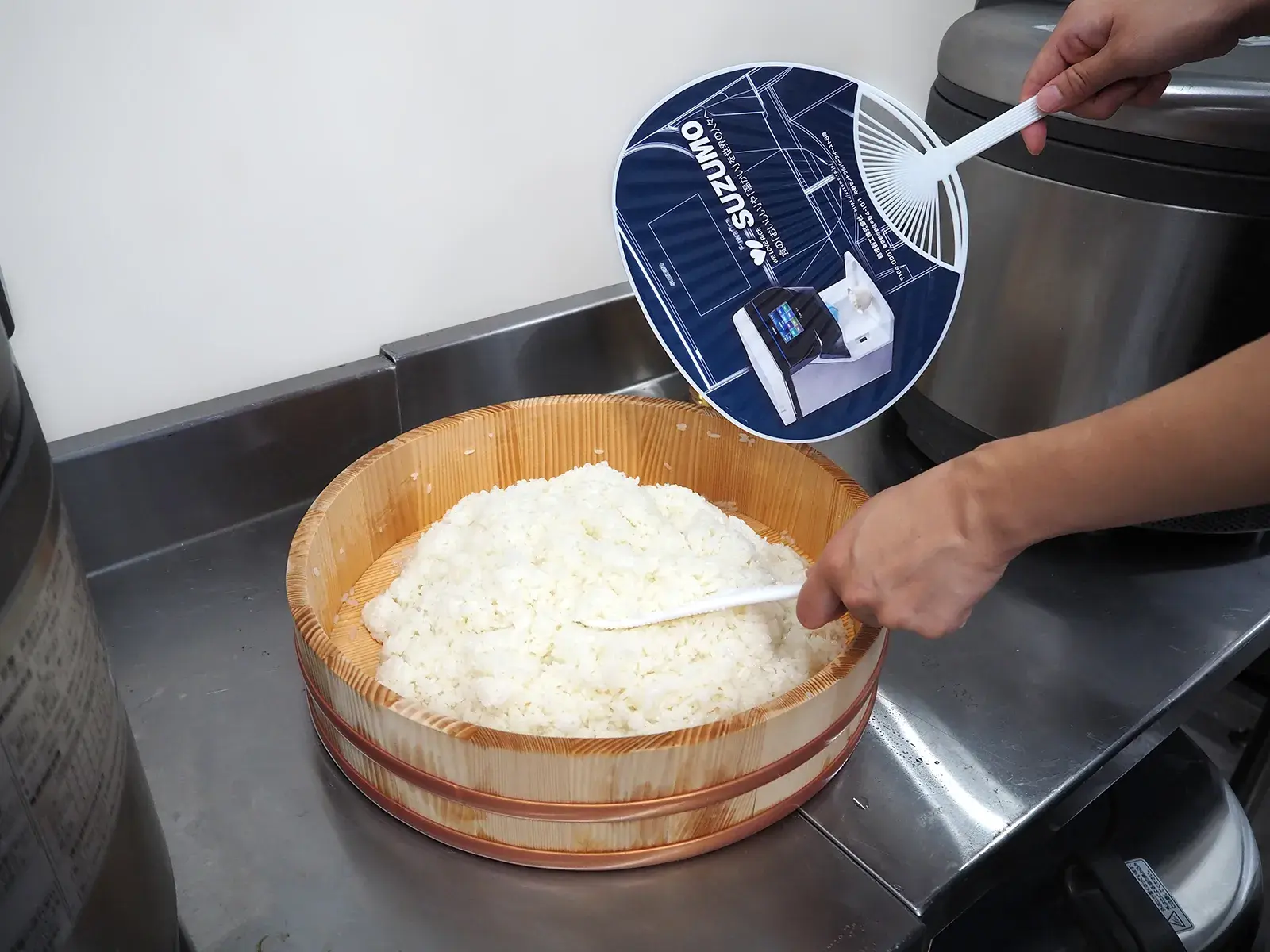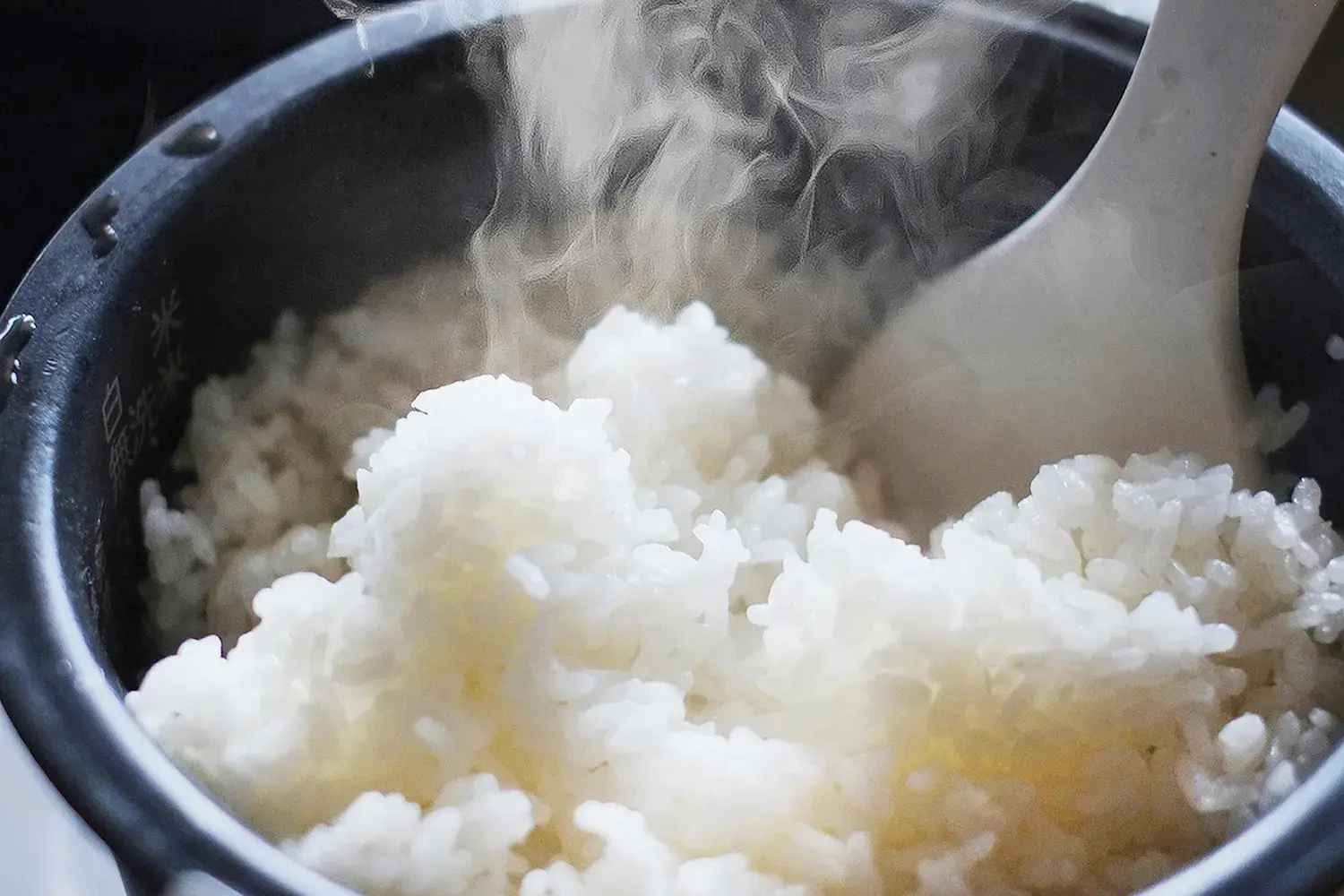Sushi basics: How to make sushi vinegar and sushi rice (shari)

Contents
1. What's the difference between sushi rice (shari) and regular rice?
2. Step 1: Make sushi vinegar
3. Step 2: Cook rice
4. Step 3: Combine the rice and vinegar
5. Step 4: Gently stir the rice (sharikiri)
6. Step 5: Store
7. Conclusion
Sushi is an iconic part of Japanese cuisine, and is a familiar sight at many restaurants and delicatessen areas in supermarkets, even outside Japan. While it is certainly important to have a wide selection of fresh sushi toppings, the flavor of sushi is significantly affected by the taste and quality of the sushi rice (shari) used as well. This article gives easy-to-understand tips about the basic steps for making sushi rice (shari).

1. What's the difference between sushi rice (shari) and regular rice?
The two biggest differences between sushi rice (shari) and regular rice are the flavoring and the final texture of the rice.
[Key points about differences]
◇Flavoring: Sushi rice (shari) gets a wonderful balance between tanginess and sweetness by adding sushi vinegar.
◇Texture: To get the ideal texture for sushi, it is crucial that the rice grains are firm and not too sticky. For this reason, you need to cook the rice so that it is a little firm.
◇Delicious even when cool: Sushi rice (shari) is made in such a way that it tastes good even when it is cool.
Follow the steps below to make delicious sushi rice (shari).
2. Step 1: Make sushi vinegar
Sushi vinegar is a crucial ingredient that can make or break the flavor of sushi rice (shari). Using rice vinegar creates a more mellow tangy flavor and an even better taste compared to grain vinegar.
◇Ingredients (basic ratio)
The basic ratio for making sushi vinegar for use in sushi rice (shari) is generally said to be 4:2:1 for vinegar, sugar, and salt, respectively. However, you can adjust this ratio to taste.
◇For five servings (five go) of rice
• Rice vinegar: 150 ml
• Sugar: 45 g
• Salt: 2.5 to 3 teaspoons
◇Preparation method
Pour all the ingredients into a small pot, and then warm them on low heat until the sugar and salt dissolve (take care not to let the mixture boil). Once they have completely dissolved, turn off the heat and allow to cool.
Note: The vinegar can be stored for about a week in a refrigerator.

3. Step 2: Cook rice
When preparing sushi rice (shari) for sushi, it is important to cook the rice so that it is a little firm.
[Key points]
◇Type of rice: Use Japanese rice (short-grain rice).
◇Cooking method: Use a ratio of 1:1 between rice and water, so that the rice will be a little firm.
◇Soaking: Soak the rice for at least 30 minutes before cooking, or for around 60 minutes when it is cold in the winter. This helps achieve a plump texture when cooked.

Japonica rice (left) Indica rice (right)
4. Step 3: Combine the rice and vinegar
Mix the sushi vinegar into the cooked rice, so that it spreads evenly throughout the rice.
[Key points]
◇Container: Use a dedicated tub (or large bowl) made from wood. A wooden tub is ideal, as it absorbs excess moisture from the rice.
◇Amount of sushi vinegar: Use around 40 to 50 ml of sushi vinegar for each serving of rice (about 150 g), or adjust to taste.
◇How to mix: Pour the sushi vinegar onto a rice scoop, and move the scoop over the entire volume of the rice. If you do not have a rice scoop, pour the sushi vinegar a little at a time so that it covers all the rice evenly, and then mix the rice.

5. Step 4: Gently stir the rice (sharikiri)
This is a crucial step for making delicious sushi rice (shari). It is important to do this while the rice is still warm.
[Key points]
◇Avoid excessive stir: Gently stir the rice all over so that the sushi rice (shari) has an even texture. Use a cutting motion with the rice scoop while stirring, to avoid squashing the rice grains. You can also use two spoons to lift up the rice and then gently drop it.
◇Fan the rice: Spread out the rice evenly using a rice scoop or large spoon while taking care not to squash the grains, and then cool the surface of the rice with a handheld fan. Cool the rice quickly to get a glossy appearance.

6. Step 5: Store
Store the sushi rice (shari) in an appropriate way to preserve its flavor.
[Key points]
◇Short-term storage: It is ideal to use sushi rice (shari) as soon as possible. However, if you need to store it for a short time, you can place a wet thin towel (such as a dishcloth) on top of the container and leave it at room temperature.
◇Long-term storage: Try to avoid storing sushi rice (shari) in the refrigerator, as this will make the rice stiff. To prepare the rice for use after long-term storage, cover the container with plastic wrap and heat it a little in a microwave.

7. Conclusion
Sushi rice (shari) is a basic ingredient of sushi. You can achieve dazzlingly delicious results by following the steps correctly and making use of a few crucial tips. The quality of the sushi rice (shari) significantly affects the taste of the sushi that it's made with, so it is important to prepare it with care.
If you are the manager of a restaurant and you feel that this method may be difficult for you, then have no fear. With the SHARIKKA Cooked Rice Mixer from Suzumo, you can easily make glossy, plump, and delicious sushi rice (shari) that looks like it was prepared by an experienced sushi chef. Serve your customers the best possible sushi and make your sushi business a success!


